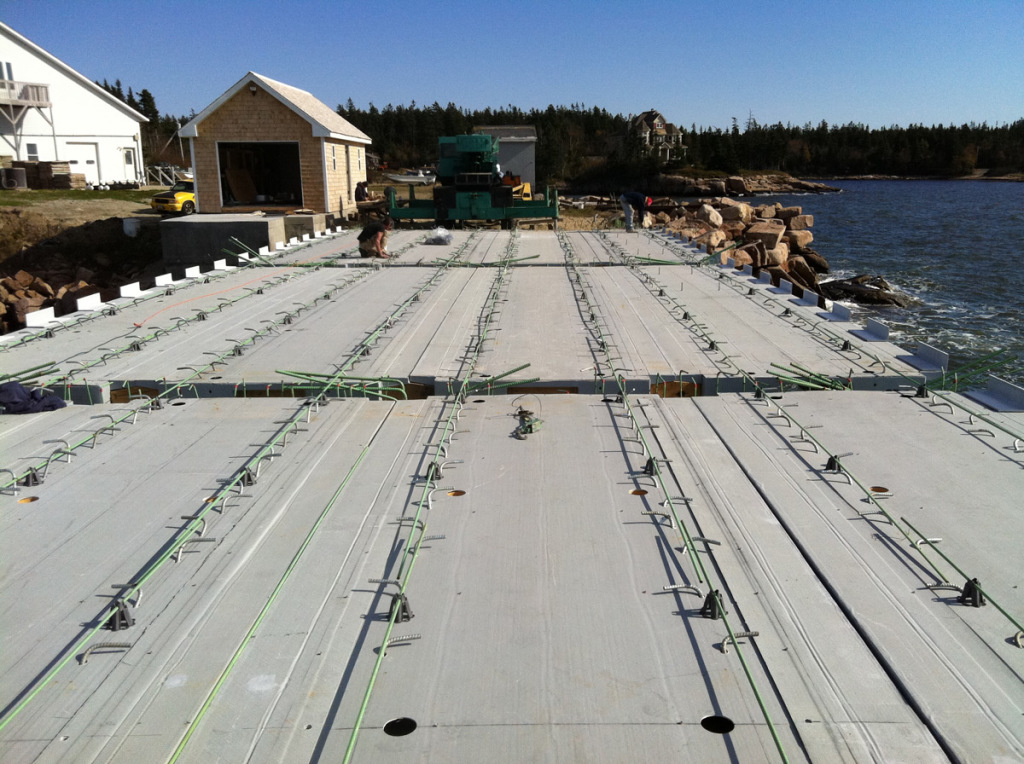
Beals Island, Maine, is a typical New England fishing community. Rocky shores, long harsh winters contrasted by amazing natural beauty with people as hearty as the landscape. When the Downeast Institute needed to replace the pier at its research facility on Beals Island, decision-makers knew they needed a better solution. The new pier would need to last through the harsh winters, require minimal maintenance and still be able to handle the trucks that delivered supplies to the research vessels that dock there.
Considering all these factors, an all-composite solution was chosen. The choice was put to the test when a year later Hurricane Sandy pounded the East Coast. The new pier weathered Hurricane Sandy and every other nor’easter since then, and it still looks like new.
Built on concrete-filled composite piles, the new pier uses Hillman Composite Beam (HCB®) pier caps and beams. The three 30-foot (9.1-meter) HCB caps were placed on three piles each. The caps and the piles were joined by rebar extending out of the piles. Once the caps were filled, four 7-foot, 6-inch-wide by 33-foot-long HCB double-tees were set on the caps for each of the three spans. All three spans of HCBs were filled with concrete in one morning. The double tees were set side-by-side, meaning there was no deck forming. FRP angles were used to support the side forms, further reducing the overall construction time. All three spans were made continuous and tied to the abutment to provide lateral stability.
Built to withstand the harsh New England environment, the installation at Beals Island is the first marine pier ever built using HCBs. Although this structure is primarily accessed by the Downeast Institute and its research partners, it is still designed to support an American Associate of State Highway and Transportation Officials (AASHTO), HL-93 truck load. The HCB pile caps were also designed to be integral with the cast-in-place diaphragms between the HCB deck units as well as the FRP pipe piles to provide a lateral force-resisting system against wave loads.
The Downeast Institute’s pier was placed in service in November of 2011. With careful attention to the details of this first-ever, all-composite pier, it is anticipated the institute will have a resilient structure that will far outlast the conventional timber structure it replaced.
Project Specs:
Owner: Downeast Institute for Applied Marine Research and Education
Contractor: DeLong Marine Services
Completion date: November 2011
Project Sheet: Click here for downloadable PDF version